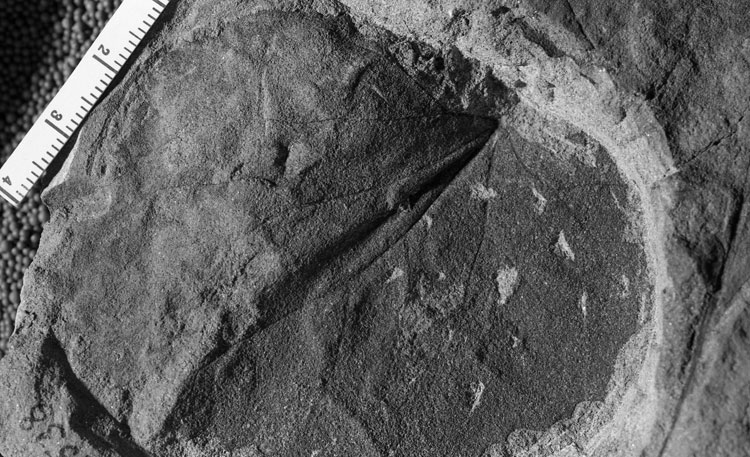Locality
From Hollick (1930) (p. 78)
"Yukon River, north bank, about 12 miles below Melozi telegraph station (original No. 3AH11); collected by Arthur Hollick and Sidney Paige in 1903 (lot 3248) (pl. 42, fig. 6). Yukon River, north bank, between Pickart's coal mine and Nulato (original No. 358); collected by F. C. Schrader in 1899 (lot 7471) (pl. 43, fig. 1)."
Description
From Hollick (1930) (p. 78)
"Plate 42, Figure 6; Plate 43, Figure 1"
"Menispermites reniformis Dawson, Roy. Soc. Canada Trans., vol. 1, sec. 4, p. 23, pl. 4, fig. 12, 1882 [1883]." (Dawson 1882 [1883])
Remarks
From Hollick (1930) (p. 78)
"There can be but little doubt of the identity of our specimen with this species, although Dawson's figure is crude nnd his description very brief, namely, " Leaf broad, reniform, 11 centimeters broad and 7 centimeters in length, margins undulate. Five veined, but with two accessory veins, making seven in all." His figure, however, shows three lateral primaries on one side of the midrib and two on the other, or only six in all, including the midrib. The description and figure taken together, however, would indicate a leaf exactly like ours, only slightly broader and with marginal undulations rather than crenulations. In the circumstances I have thought it advisable to give a more extended and detailed description of the species that will include the characters shown in the two figures, as follows:
Leaves slightly inequilateral, orbicular-cordate or reniform, 7 centimeters in length by 7 centimeters in width, margin coarsely crenulate-dentate above, the dentitions diminishing in size below, merging into an undulate and entire margin at the base; nervation palmate from the base, craspedodrome; midrib somewhat flexuous, with two subopposite secondaries above the middle; lateral primaries, two prominent and one subsidiary on one side, one prominent and two subsidiary on the opposite side, forked or branched, the main nerves and their branches terminating above in the dentitions, the subsidiary basilar nerves and the branches above connected by cross nervation, forming a network of irregular marginal meshes, with fine nervilles that terminate in the adjacent crenulations.
These leaves evidently belong in the nonpeltate section of the genus that includes Menispermites potomacensis Berry (1911) (p. 466, pl. 93, figs. 3, 4) and the question has been raised whether leaves of this type should be retained in the genus, especially if we are to accept Menispermites obtusiloba Lesquereux (1894) (p. 94, pl. 25, fig. 1) as the generic type. Berry (1911) (p. 462) has segregated the orbiculate peltatc species into a group, in which he includes M. virginiensis Fontaine and M. tenuinervis Fontaine and to which he gives the new generic name Nelumbites, by reason of certain resemblances to the leaves of Nelumbo. They are not symmetrically peltate, however, and they possess a more or less distinct midrib - features which seem rather to suggest a possible relationship with or at least a likeness to the Nymphaea-Castalia group of the Nymphaeaceae. The entire genus needs revision; but in the meantime the matter of principal importance is the identification of specimens, one with another, under any generic and specific name that may be recognized."
